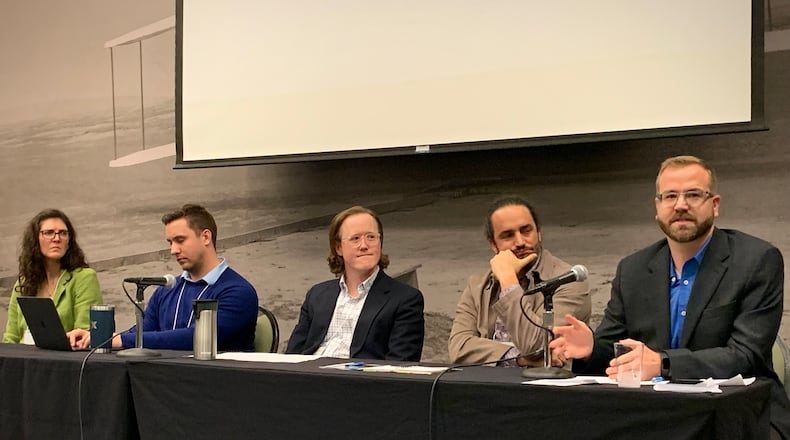“It’s actually very difficult to anticipate beforehand, a priori, what (artificial intelligence) is going to be good at, and what it’s going to be bad at,” he said. “And so you have to be prepared for finding that boundary and providing some data or evidence to support your use case.”
New technologies will not replace humans. However, they will change the nature of the work that humans have to do, working as a team with artificial intelligence to accomplish goals, said Julio Mateo, Senior Research Scientist at 361 Interactive.
“The goal here in my opinion isn’t to take over human functions,” Mateo said. “We’re trying to enhance the capabilities, enhance performance and achieve things that we couldn’t achieve alone.”
Proctor and Gamble, the Cincinnati-based manufacturing giant, is already using AI for its employees called ChatPG. The model is trained on internal data, said Alex Gutman, Director of Data Science at P&G, and has already proven several use cases.
“We are an international organization,” Gutman said. “We have people with English as their second language. They write a document, ChatGPT, or in our case ChatPG, which is our safe, firewalled version, can translate it and fix some of the nuances in the English language.”
While P&G has immense resources to experiment and develop artificial intelligence, if companies are considering adopting internal AI models, there are several important questions to consider, Gutman said.
“The first thing is just to assess if AI is actually going to help you achieve your business goals,” he said. “And I say that because so many people get enamored with this technology that they rush into using it, and then there’s immediate backlash when it fails. Then they kind of close the walls to AI, and they miss out on all these other opportunities.”
Businesses should also consider if their infrastructure can handle it in the first place.
“The second one is make sure your data is ready. And I think that’s going to be a big wake-up call,” he said. “You probably have five different versions of your vacation policy sitting in a database. Which one is (the model) going to learn from?”
Companies and organizations using AI have two primary responsibilities when using machine learning models: understanding and vetting the data that’s going in, and testing and verifying the information that comes out, said Lori Mahoney, Interim Multi-Domain Sensemaking Technology Area Lead at the Air Force Research Laboratory.
“Any application that you have, to be effective, you have to consider what data you’re using and how to understand that data, to make sure that it is representative of what you’re asking the system to do,” she said.
Additionally, training in data literacy and verification are some of the most important things employers can do to prepare their workforce for the skills they will need, Mahoney said.
About the Author

